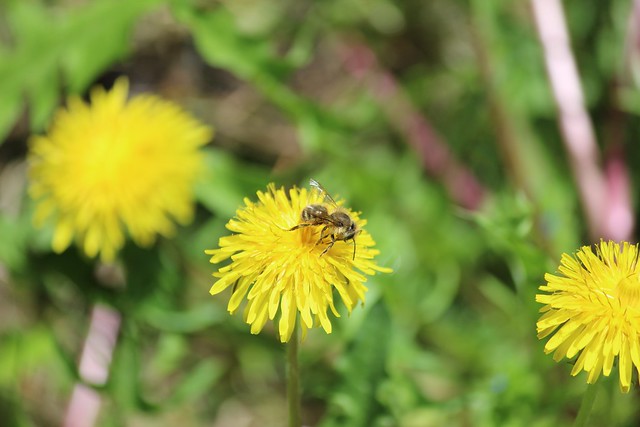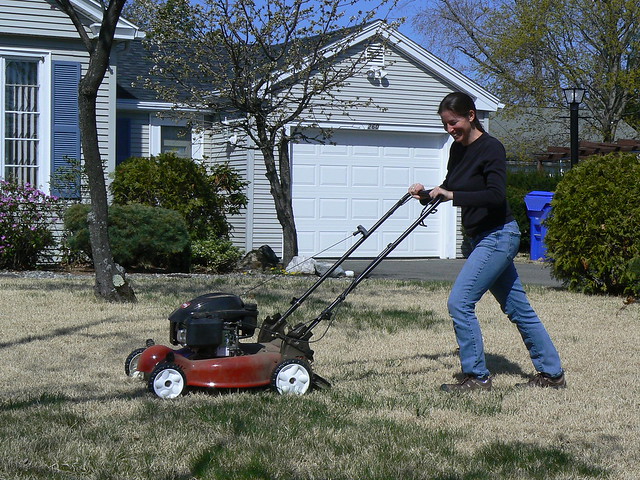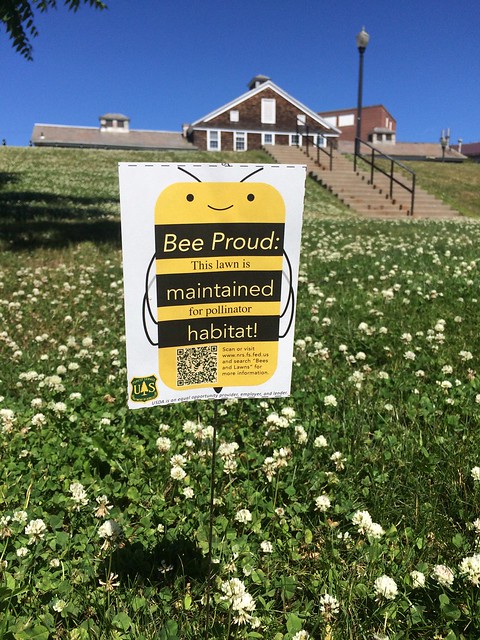
Across the globe, native bee species are having trouble. Populations of bees have experienced severe declines that are largely attributed to the loss of habitat. If you have a lawn, you may be able to reverse this trend: All you have to do is be a little lazy and, depending on your neighborhood, immune to social pressure.
A study published this past March found that cutting the grass every two weeks resulted in significantly higher bee abundance. Less frequent mowing gives lawn flowers like dandelions and clover – this is where social pressure comes to bear – a little more time to grow and blossom, resulting in nourishment for bees.

Sixteen landowners in Springfield, Massachusetts were willing to turn lawn management over to a USDA Forest Service research team for two summers. Some of the lawns were tidily cut every week; some were cut every two weeks; and others were cut every three weeks. The research found that the diversity of bee species was greatest in the lawns that were cut the least often.
However, it was the lawns cut every two weeks that supported the highest abundance of bees. These lawns hit the sweet-spot, as it were, with plenty of lawn flowers combined with shorter grass that made access to lawn flowers easier.
One of the things that surprised the research team the most is just how many different bee species there are in the suburbs. Over the course of the study, the team documented 93 species with supplemental observations reaching 111 species. This represents roughly a quarter of all bee species recorded in Massachusetts.
There are an estimated 40 million acres of lawn in the United States, including yards, athletic fields, and golf courses, making lawn management a potentially significant tool in efforts to preserve pollinators. Bees using our lawns also pollinate the trees that provide shade in our neighborhoods and crops like strawberries.
People care about wildlife, including the everyday wildlife that they see – or maybe see less often – in their own backyards. This research is especially exciting because it suggests that when it comes to declines in bee populations, everyone with a yard, whether they live in the suburbs or out in the countryside, can actually do something about it.

